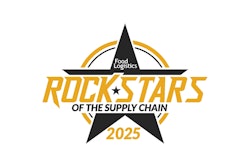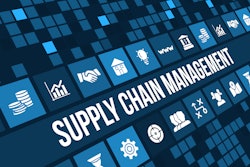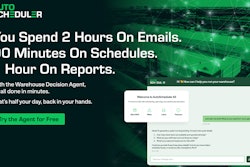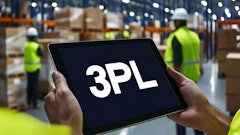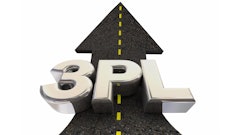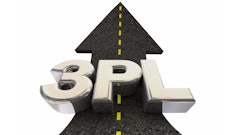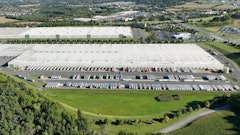
Transportation management systems (TMS) have become indispensable tools in a 3PLs toolbox. Today, third-party logistics (3PL) providers are under pressure to deliver more efficient, transparent and cost-effective transportation solutions, and a robust TMS can address these challenges. By exploring the advanced capabilities that optimize transportation operations, we can dissect the use cases driving TMS adoption and find out how 3PLs can successfully integrate them into their practices.
TMS: Efficiency and effectiveness
TMS platforms are designed to help businesses plan and optimize the movement of goods. For 3PLs, a TMS provides a range of capabilities that enable more efficient and scalable logistics management including route optimization and planning, freight management and carrier selection, real-time tracking, billing automation, data reporting, multi-modal transport management and more.
Sean Gill, VP of business solutions at Arrive Logistics, says implementing a TMS can greatly improve 3PL efficiency and effectiveness by streamlining essential tasks and operations like pricing, load building, capacity matching, tracking and billing. For example, a TMS optimizes shipments by matching loads with the most efficient transportation modes, ensuring cost-effective freight movement while meeting service requirements.
A modern, successful TMS will provide efficiency, transparency and actionable insights for every aspect of a 3PL broker, explains Dustin Verdin, executive director of business at Zipline Logistics.
"Online loadboards and tender offer/negotiations communications help a 3PL find the best carrier(s) for the best price and the best on-time delivery outcomes. Integrated Freight tracking allows oversight into all active loads and provides alerts for loads that may have issues or are at risk. External-facing dashboards and KPIs allow customers complete visibility to their entire freight spend and provide actionable data to both improve performance and lower costs. Internal dashboards, KPIs, and widgets provide clarity, efficiency, and priority to operational actions and managerial decisions," says Verdin.
And from a TMS providers view, Kevvon Burdette, chief commercial officer at Princeton TMX, says both shippers and 3PL providers can harness the benefits from a TMS when integrated properly, resulting in process improvements like:
- Enhanced process efficiency. Eliminate manual tasks by automating your end-to-end transportation processes—from creating RFQs, tendering loads, carrier payment, reporting, and more. Improved efficiency is especially important in a tight labor market.
- Cost savings. Reduce transportation costs using a highly configurable system that ranks carriers by cost, service rating, and other business rules.
- Improved visibility. Real-time visibility into inbound and outbound shipments and on-demand access to critical reporting data enables shippers to identify new optimization opportunities and quickly respond to disruptions.
- Better customer service. Access to real-time load data enables shippers to give more timely, detailed delivery information to customers.
Cost consciousness and visibility
When it comes to TMS, in the quest for cost reduction in transportation, it's not a matter of does it save money; it's a matter of how does it do so.
 An employee coordinates a shipment.AdobeStock_372187484.jpeg
An employee coordinates a shipment.AdobeStock_372187484.jpeg
According to a Gartner survey, TMS users typically see 5-15% yearly savings. As a practical example, recently a global industrial manufacturer using Princeton TMX’s multi-modal TMS reduced freight rates by 28% in just one year. The company was also able to leverage the Princeton TMX mobile app to track driver check-ins more efficiently and reduce overdue payments by 98%.
"Those who rely on manual processes – either partially or entirely – are missing out on the opportunity to utilize the large volumes of operational data available to them to improve efficiency and realize cost savings. A TMS allows shippers to view their entire network in real time, enabling them to quickly identify and address any potential problems while gathering critical data on shipments, carriers, routes and more. All that data can then be put to work to support better operational planning and ongoing efficiency," explains Burdette.
A TMS should strengthen core activities by matching shippers' volume and service needs with carriers who can support them, optimizing pricing and enhancing visibility through reliable tracking. This approach, says Alex Schwarm, VP of data and data science at Arrive Logistics, supports strong service levels (e.g., on-time delivery and pickup) while minimizing costs through consistent performance, around-the-clock support and reducing cost per mile — even supporting customer environmental, social, governance (ESG) goals by reducing environmental impact (lowering annual CO2 emissions).
Integration with other tools
An advanced TMS can integrate with other systems, and that's a key feature for 3PL consideration. As Verdin explains, this interoperability with other WMS/ERP systems is a hallmark of successful TMS systems. Integration can take many forms, including EDI, API, data import/export, and custom implementations and this allows a 3PL, its customers and its carriers to stay informed of and proactively act upon any potential changes that may affect the supply chain.
"Direct communication with WMS/ERP systems can help ensure freight is ready for pickup at the expected time and ensure a dock and/or appointment is available for the carrier to deliver on time. Integration with accounting and management allows for real-time decision making within the overall supply chain, providing actionable data to improve efficiency and lower costs," says Verdin.
Integrations result in end-to-end visibility that's highly sought after in supply chains now. When a TMS can communicate with a WMS to receive real-time data about orders and inventory, that information can be used for load optimization and scheduling.
Ultimately, Burdette says using disparate systems often leads to inefficiencies and increased costs, while creating isolated data environments, making it difficult to get a comprehensive, real-time view of logistics operations. This leads to poor decision-making and the domino effect of a faltering logistics network facing disruption at the drop of a hat, whose greatest tool is often the visibility produces by data and analytics to forecast and plan.
The coveted role of data
The power of data in decision-making is a known fact. As analytics evolves, so does the ability for advancements in TMS capabilities. Schwarm says advanced algorithms and machine learning models provide fast and accurate cost prediction and competitive pricing that enable reps to better support shipper and carrier needs; for APIs and automated load offers, these systems can also support rapid responses for urgent and planned shipments while delivering on service.
 Abstract image of data and analytics collection.Tierney/stock.adobe.com
Abstract image of data and analytics collection.Tierney/stock.adobe.com
As with all good processes, evolution can bring about an increase in quality. Burdette explains this simply: Better transportation starts with better data.
A stronger future
Supply chain leaders predict that the technology behind these features is going to continue to grow in the next 5-10 years, but what does that mean for 3PLs implementing it now? For Gill, TMS capabilities are likely to expand beyond traditional functions and become more deeply integrated with a broader range of business solutions— some we're already seeing today.
"The biggest evolution of TMS systems (and the logistics industry in general) may come in the form of industry-standardized, API-driven appointment scheduling, with a healthy dose of AI and Large Language Models to automate much of the process. The lack of standard systems and processes for appointment scheduling cause inefficiencies when facilitating new orders, but even more so when trying to recover loads which may have gone awry. Better yet, future systems will be able to detect loads at risk and make appointment adjustments on the fly to completely avoid the operational and financial consequences of late deliveries," says Verdin.
Terms like AI and visibility are no longer a hypothetical. In logistics, where speed is a necessity, these tools are full speed ahead and TMS providers are working to invest in developing improvements, which Burdette says include moving towards greater functionality and all-in-one solutions.
TMS capabilities are no secret to 3PL providers. By leveraging the ongoing advancements of the software, 3PLs can navigate the complexities of modern supply chains more effectively no matter how fast and complex the landscape becomes.





